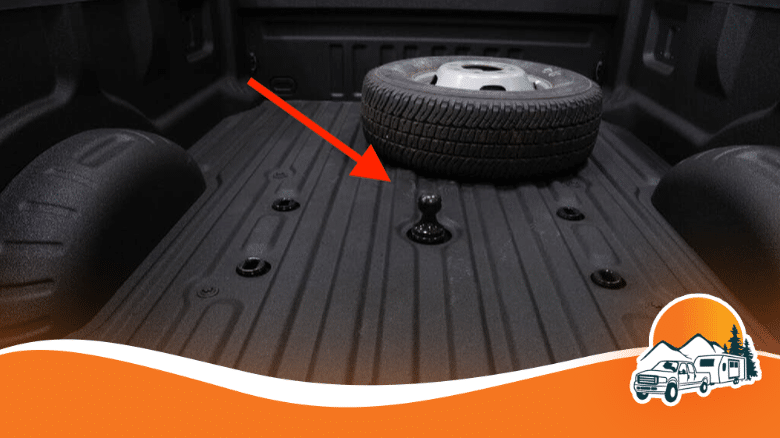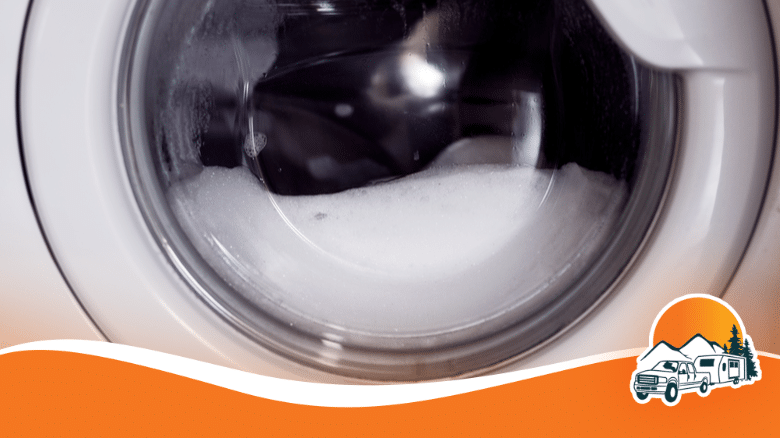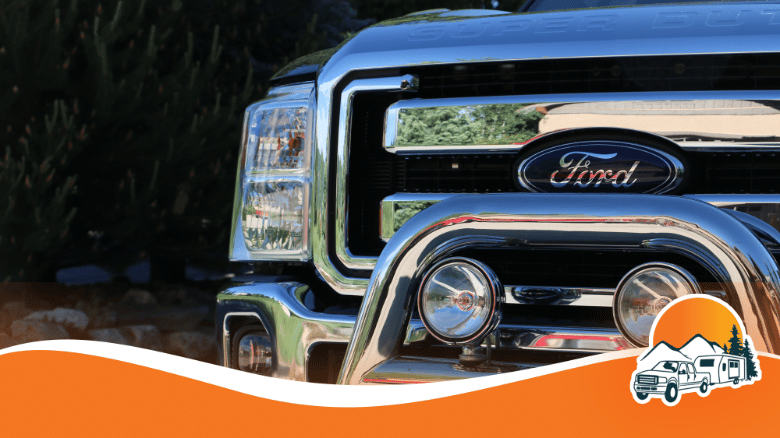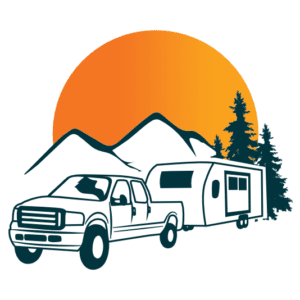Planning to pull a fifth wheel or a trailer can be a complicated task. You have to account for the weight of the vehicle you’ll pull, the hitch you choose, and the dynamics of the structure. While RV owners can navigate the other complications, they are often clueless when selecting the right hitch.

Fifth-wheel hitches come with a solid plate on your tow truck’s bed. These hitches work perfectly for fifth-wheel trailers and not for other vehicles. Gooseneck hitches are also known as ball hitches and sit on the bed of your truck. You can pull horse trailers and industrial trailers with them.
In this article, we define and compare gooseneck hitches with fifth-wheel hitches. Stay with us as we help you find the best fit for your vehicle.
What is a Gooseneck Hitch?
A gooseneck hitch comes with a ball mount, which can be anchored into the flatbed of a pickup trailer or truck. The gooseneck hitch is connected to the trailer through a hitch ball and distributes weight across the axle of the towing vehicles.
The hitch gets its name based on its ability to twist, turn, and settle within the bed of a trailer – just like a gooseneck. The gooseneck hitch is lightly balanced on the rear axles of a trailer. This helps minimize sway and adds to the vehicle’s stability on the road.
The gooseneck hitch can handle the excessive weight without compromising the turning radius of your vehicle. The hitch can, however, take some time to get used to, especially if you are traveling on a horse trailer, flatbed, or livestock trailer.
Pros and Cons:
Gooseneck hitches come with multiple pros and cons.
Pros:
- Gooseneck hitches are small in size and are invisible after installation.
- These hitches can haul over 30,000 lbs at one time.
- Some models can be removed or flipped to create the perfect truck bed.
- The truck can be connected with attachments through a ball hitch.
Cons:
- The hitches require a custom installation process, which is often lengthy.
- You cannot attach this hitch to other non-ball hitches in the market. You will need an adapter to do so.
What is a Fifth Wheel Hitch?
The fifth wheel hitch is designed explicitly for fifth wheel trailers and comes under the Class IV category of hitches. Class IV includes hitches that can tow fifth-wheel trailers with a gross weight between 5,000 to 10,000 pounds. The fifth wheel hitch mechanism is similar to what you find on a tractor-trailer hitch. The hitch fits perfectly onto the bed of your fifth-wheel trailer and comes with a U-shaped design for decent weight distribution.
The fifth wheel hitch has a pivoting plate or a kingpin, which can rest on the hitch. The hitch equally distributes weight over the rear axle, providing an easy-to-maneuver mechanism for all. The fifth wheel hitch works without a ball mount and comes with an extended hitch that connects the tow vehicle with the middle of the rear axle. Fifth-wheel hitches are used for heavy towing models and are trusted by fifth-wheel owners and RV goers.
Pros and Cons of Fifth Wheel Hitches
Some of the pros and cons of fifth wheel hitches include:
Pros:
- The weight class is higher than some of the other weight classes.
- There are multiple safety mechanisms installed inside the hitch.
- The hitch is packaged and distributed together with purchasing a new fifth wheel.
- The hitch can minimize road shock, sways, and bumpy rides for the towing vehicle.
Cons:
- The hitch can be challenging to install and remove from the fifth wheel’s bed.
- The hitches are limited in application and can only be used for fifth-wheel trailers.
Similarities between Fifth Wheel and Gooseneck Hitches
Both these hitches have a few similarities in how they function and distribute a load of your towing vehicle.
Both fifth wheel hitches and gooseneck hitches must be manually installed within the bed of your truck’s frame. The permanent structure for both frames is solid, and the pieces cannot be removed easily. Both these hitches can only be installed on trucks and nowhere else. The large, flatbed of a truck helps the hitches perform their functions.
Both fifth wheel and gooseneck hitches are easy to drive with. Drivers can make tricky turns without worrying about the towed vehicle. Both hitches allow good stability on the road and help with challenging turns.
These hitches are perfect for heavy-weight vehicles and can perform exceptionally well when put to the test.
Comparing Gooseneck Hitches with Fifth Wheel Hitches
There are considerable differences between fifth wheel hitches and gooseneck hitches. They include:
Hitch Assembly Mechanism
Gooseneck hitches come with a ball-mounted mechanism that can be anchored to the bed of a full-length pickup truck. A gooseneck hitch is known for its unique shape and design. The design turns around like the neck of a goose and can go right into the bed of a truck.
A fifth-wheel truck uses a wheel-shaped plate to accomplish a connection with the hitch. A fifth wheel hitch can go right into the middle of this wheel-shaped plate to get the desired contact. The fifth wheel hitch can also extend towards the rear axle to provide stability to the vehicle being towed.
Installation
Gooseneck hitches come with an exciting design and installation process. Gooseneck hitches can be easily adjusted within the towing vehicle. By the end of the process, a significant part of the hitch will be invisible and away from your view. The gooseneck hitch can be stored as it is, even when you are not using it. Just flip the ball over, and keep the hitch within the same opening.
It is best to let a professional take over the installation process and oversee the steps from start to finish. You can start the process by lowering the exhaust pipes in your truck and creating additional room for the elbow ball joints. Since gooseneck hitches are more versatile, you will have to align them manually with your trailer.
Fifth-wheel hitches come with all fifth-wheel models and are custom-made to the requirements of the trailer at hand. The base of the hitch is made of two solid metal rods and allows even weight distribution. The rods will set in place even after the hitch is taken out. Installing a fifth wheel hitch is a lifetime alteration, and your trailer will see remnants of it forever, even after you remove it.
Installing a fifth-wheel hitch is easier in comparison to installing a gooseneck hitch. However, we recommend hiring a professional for both tasks.
Coupling Mechanism
As our readers would know by now, the coupling mechanism is different for both gooseneck and fifth wheel hitches. Both gooseneck and fifth-wheel hitches move around the bed of a truck, which is perhaps the only similarity between both. Gooseneck hitches are coupled through a moving ball, while fifth wheel hitches are inherently U-shaped. The fifth wheel hitch connects with a kingpin for better impact.
Maneuverability
A gooseneck hitch is better suited for minimizing sway and providing better road stability. This enhances the turning radius of the truck and improves the curb weight. Increased maneuverability can enhance stability and lead to a better turning radius. On the flip side, fifth-wheel hitches offer better smoothness without bumps on the roads. The towing capacity of fifth wheel hitches is greater than gooseneck hitches.
Conclusion
Both gooseneck and fifth wheel hitches sit over the rear axle of a truck and are connected to the bed of your truck. Gooseneck hitches are better for stability and increased turning radius on the road, while fifth wheel hitches are better for increased towing capacity and less shock engagement.
Fifth-wheel hitches are exceptionally good at handling fifth-wheel trailers and can manage the additional load that comes with them. Both hitches are perfect for their respective applications and can be trusted for towing your truck/trailer.
Are you team gooseneck or fifth-wheel hitch? Let us know what you are leaning toward in the comments section below.







